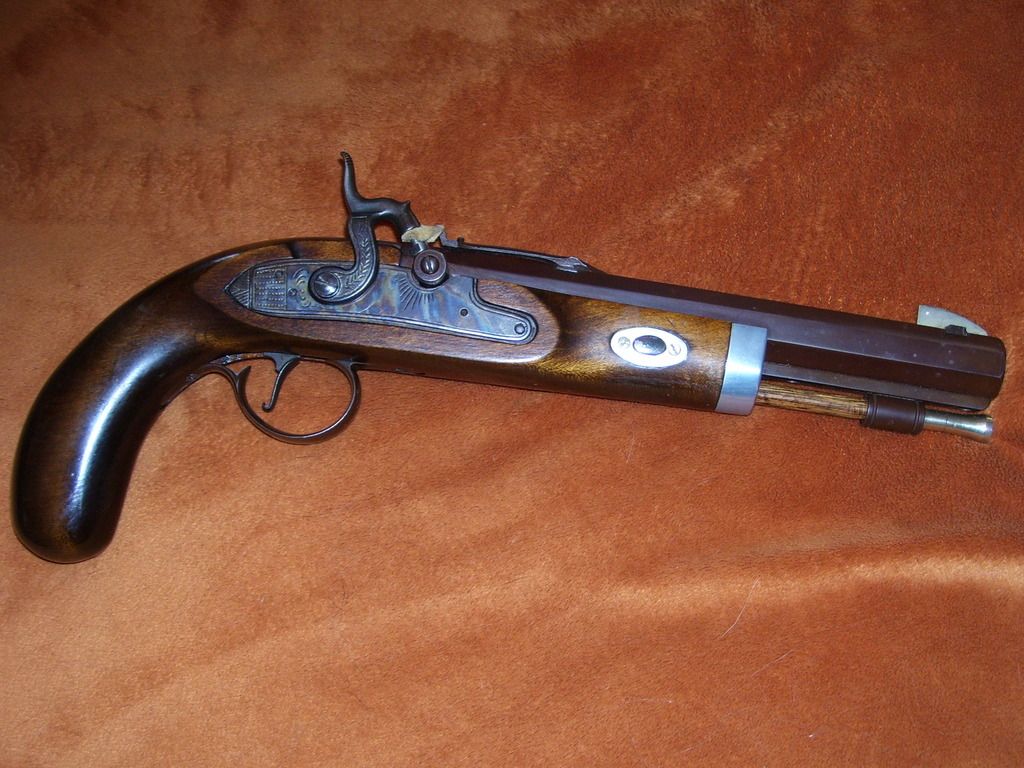fishmusic said:
Yes, that is the same pistol as mine. I will be investigating the simple fixes first. That I can't load with .015 patch concerns me when others use even thicker ones.
Most, if not all of the posts you see which talk about using thicker patches are speaking of rifle loads (or using undersize balls in a pistol).
Rifles take large powder loads which produce very high breech pressures.
Also, many of the rifle barrels have rather deep rifling grooves that need a thick patch to seal off the powder gasses.
These high pressures need a very tight fitting patch that completely fills the grooves so patch thicknesses of .015-.020 are often used.
With a rifle it is easy to get a good grip on the barrel. It is also easy to rest the butt of the gun on the ground so any hard pounding that might be needed with a short starter to get the patched ball started is of no consequence.
Pistols on the other hand use light powder charges. Most of the factory made pistols have fairly shallow grooves.
The gun is difficult to get a good hold on it and resting the butt of the grip against hard things is a good way to crack or break the stock.
These things make using a fairly thin patch like a .010 (or even slightly less) not only possible, but recommended (by me).
The important thing is the patch should be at least as thick as the rifling grooves are deep.





